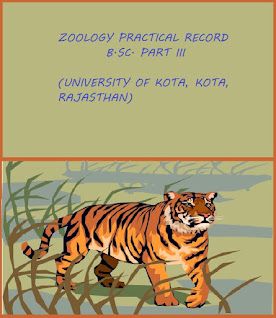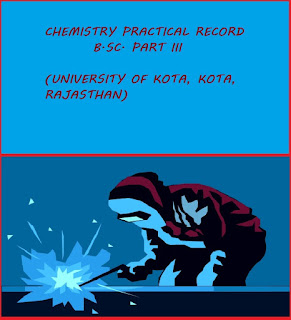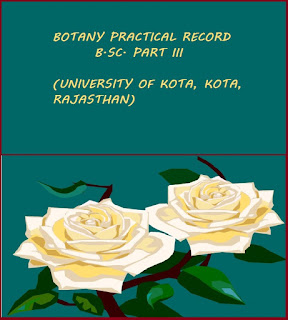
Government
P.G. College Gangapur City
BOTANY
PRACTICAL TIME TABLE 2019
Class
|
Day
|
B.SC. PART I
345-388 |
MONDAY
|
B.SC. PART I
301-344 |
TUESDAY
|
B.SC. PART II
634-666 |
WEDNESDAY
|
B.SC. PART II
601-633 |
THURSDAY
|
B.SC. PART III
938-974 |
FRIDAY
|
B.SC. PART III
901-937 |
SATURDAY
|
Note - Time 12:00pm to 2:00pm
|
|
ZOOLOGY PRACTICAL TIME TABLE 2019
Class
|
Day
|
B.SC. PART I
301-344 |
MONDAY
|
B.SC. PART I
345-388 |
TUESDAY
|
B.SC. PART II
601-633 |
WEDNESDAY
|
B.SC. PART II
634-666 |
THURSDAY
|
B.SC. PART III
901-937 |
FRIDAY
|
B.SC. PART III
938-974 |
SATURDAY
|
Note - Time 12:00pm to 2:00pm
|
|
Chemistry
PRACTICAL TIME TABLE 2019
Time/Day
|
11.00-12.30
|
12.30-02.00
|
02.00-03.30
|
Monday
|
401-445(RK)
|
701-745(CSM)
|
1001-1040(UM)
|
Tuesday
|
446------(CSM)
|
745-----(RK)
|
1041-----(VKM)
|
Wednesday
|
501-545(UM)
|
801-845(VKM)
|
1101-1140(RK)
|
Thursday
|
546-----(VKM)
|
846-----(UM)
|
1141-----(CSM)
|
Friday
|
301-345(RK)
|
601-645(CSM)
|
901-940(UM)
|
Saturday
|
346-----(CSM)
|
646-----(RK)
|
941-----(VKM)
|
B.Sc (Part-III) – Zoology - Practical
1. Study of museum specimens / models / chart / photograph: Petromzon, Myxine/Bdellostoma, ammocoete larva, Acipenser, Amia, Lepidosteus, Labeo, Clarius, Anguilyla, Hippocampus,Exocoetus, Echeneis, Protopterus, Ichthyophis, Proteus, Ambystoma, axolotl larva, Siren, Alytes, Hyla, Chelone,Testudo, fresh water tortoise, Sphenodon, Hemidactylus, Phrynosoma, Draco, Chamaelion, Eryx, Hydrophis, Naja, Vipera, Bungarus, Cocodylus, Alligator, Archaeopteryx, Pavo cristatus, Psittacula, Collumba, Mylvus, great Indian bustard, saras crane, vulture, crow,Ornithorhynchus, Tachyglossus, Macropus, bat, Loris, Manis, Herpestes, Erinaceous.
2. Permanent slides: Mammalian Histology: V. S. skin, T.S. spinal cord, stomach, duodenum, ileum, rectum, pancreas, liver, lung, kidney, bone, cartilage, testis, ovary, placenta, pituitary gland, V. S. eye; striated muscle fibre.
3. Dissection: Through Chart / Model / Photograph / CD. Any bony fish : External features, general anatomy,afferent and efferent branchial vessels, brain, cranial nerves, eye ball, its muscles and innervation, internal ear, urinogenital system.
4. Permanent mounting: Cycloid scales, striated, nonstriated and cardiac muscle fibres, filoplume, blood film.
5. Osteology: A comparative study of articulated and disarticulated (original / artificial) bones of frog, Varanus, fowl and rabbit.
6. Developmental Biology: Study of development of chick: Whole mounts and sections of 18 to 72 hour's embryo. Histological study of development of frog/toad : Egg, early cleavage, blastula, gastrula, neurula and different stages of tadpole. Study of spermatogenesis, oogenesis, fertilization and metamorphosis of frog/toad. Development of mammalian embryo through charts/models.
7. Physiology:
a. Demonstration of catalase and ptyalin enzyme activity.
b. Haematocrit value.
c. RBC counting.
d. WBC counting.
e. Differential counting.
f. Haemoglobin percentage.
Note: Animals used in practical are subject to the condition that these are not banned under the Wild Life Protection Act.
Download Link -
Click Here For Preview
Botany Practical
Time: 5 Hrs. Maximum Marks: 75 Minimum Marks: 27
Physiology:
1. To study the permeability of plasma membrane using different concentration of organic solvents. 2. To study the effect of temperature on permeability of plasma membrane.
3. To study of effect of toxic substances on permeability of plasma membrane.
4. To demonstrate the phenomenon of the osmosis by the use of potato osmometer.
5. To study the phenomenon of plasmolysis and deplasmolysis using Tradescantia / Rhoeo discolor leaves and different concentrations of sugar.
6. To study the protoplasmic streaming (In Hydrilla / vallisnaria)
7. To demonstrate the rate of transpiration by use of potometers (Ganong’s/Farmers)
8. To study the relative rate of transpiration from the leaf surfaces of the different plants using cobalt chloride paper.
9. To demonstrate that oxygen is evolved during the photosynthesis by inverted funnel method.
10. To demonstrate that light is necessary for photosynthesis.
11. To demonstrate the effect of different wavelengths of light during the photosynthesis.
12. To demonstrate the carbon-dioxide, light, water and chlorophyll are essential for photosynthesis by moll’s experiment.
13. To compare the rate of photosynthesis under different condition by using wilmott’s bubbler.
14. comparison of the rate of respiration (R.Q.) of various plant parts or substrates with the help of Ganong’s respirometer.
15. Separation of chlorophyll pigments by the paper chromatography.
Biochemistry:
1. To study the activity of catalase, peroxidase dehydrogenase enzymes in plant tissues. 2. Phytochemical test for starch, sugars, protein, fats, tannins, Anthocyanin.
Biotechnology :
1. Introduction of the instruments/techniques laminar air flow/ sterile bench and autoclave 2. Preparation of M.S and P.D.A. culture media, slant preparation. 3. Demonstration of inoculation techniques, aseptic transfer of explants and microbial transfer technique
24
4. Demonstration of the technique of micropropagation by using different explants e.g., axillary buds, shoot meristem
Ecology:
1. To determine minimum size of quadrat for phytosociological studies of herbaceous plants.
2. To determine frequency of the herbaceous species by quadrat method.
3. To determine density and abundance of the herbaceous flora by quadrat method.
4. Soil analysis/Field test (a) Soil Texture (b) Soil moisture
5. To determine water holding capacity of soil of grass land or wood land
6. To determine the pH of given soil samples.
7. To demonstrate the presence of carbonate and chloride in different water samples/soil samples.
Ecological adaptations:
8. Morphological & Anatomical adaptations in some hydrophytes & xerophytes: (Specimens/slides/section cutting) Hydrilla, Typha, Eichhornia, opuntia, Euphorbia, Capparis, Casurin, Nerium, Calotropis
9. Ecological instruments and their working
Economic Botany:
1. Microchemical tests for – Lignin, Cellulose, Cutin, Suberin, Starch, Sugar, Protein and Oil in plant tissues. 2. Microscopic examination of starch grains of wheat, maize Rice and Potato.
Utilization of plants (a) Food plants – Wheat, Maize, Rice, Potato, Sugarcane (b) Fibres – Cotton, Jute (c) Vegetable oils – Ground nut, mustard and coconut (d) A general account of the fire wood, timber yielding plants and Bamboos (e) Spices and condiments – Clove, Black pepper, Cinnamon, Cardamom. (f) Medicinal Plants – Rauwolfia, Withania, Cinchona, Papaver, Ocimum, Datura, Ephedra, Taxus, Aloe, Azadirachta (g) Beverages – Tea, Coffee (h) Rubber – Ficus elastica, Hevea Viva
Download Link -
Click Here For Preview
Chemistry Practical
Distribution of Marks:
• Inorganic Chemistry Experiments - 20
• Organic Chemistry Experiments - 20
• Physical Chemistry Experiments - 20
• Practical Record (for regular students only) - 05
• Viva-voce (for regular students) - 10
• Viva-voce (for non-collegiate students) - 15
Inorganic
Chemistry
Synthesis and Analysis
• Preparation of
sodium trioxalatoferrate (III) Na3[Fe(C2O4)3] and determination of its
composition by permagnomotry.
• Preparation of Ni-DMG complex [Ni(DMG)2].
• Preparation of copper tetraammine complex [Cu(NH3)3]SO4.
• Preparation of cis-and trans-bisoxalatodiaquachromate
(III) ion.
Instrumentation
• Colorimetry - Job's method and Mole-ratio method.
• Adulteration - Food stuff.
• Effluent analysis
- water analysis.
• Solvent Extraction
- Separation and estimation of
Mg(II) and Fe(II)
• Ion Exchange Method
- Separation and estimation of
Mg(II) and Zn(II)
Volumetric Analysis
• Iodimetric & Iodimetric titrations.
Organic
Chemistry
Section-A
Laboratory
Techniques:
(i) Steam Distillation:
• Naphthalene from its suspension in water. • Clove oil from Clove • Separation of o-and
p-nitrophenols (ii) Column Chromatography:
• Separation of fluoressein and methylene blue. • Separation of leaf
pigments from spinach leaves. •
Resolution of racemic mixture of (Z)-mandelic acid. Qualitative Analysis: Analysis of an organic mixture containing
two solid components using water, NaHCO3, NaOH for separation and preparation
of suitable derivatives.
Section-B
Synthesis of Organic Compounds • Acetylation: Salicylic acid, aniline, glucose and
hydroquinone. • Benzoylation: Aniline and
phenol. • Aliphatic Electrophilic
Substitution: Preparation of Iodoform from ethanol and acetone. • Aromatic Electrophilic Substitution: o Nitration:
Preparation of m-dinitrobenzene,
Preparation of p-nitroacetanilide o Halogenation : Preparation of p-bromoacetanilide Preparation of 2,4,6-tribromophenol. •
Diazotization/coupling: Preparation of methyl orange and methyl red. •
Oxidation: Preparation of benzoic acid from toulene. • Reduction: Preparation of aniline from
nitrobenzene and mnitroaniline from m-dinitrobenzene. Stereo-chemical study of Organic Compounds
via Models • R and S configuration of optical isomers. • E and Z configuration
of geometrical isomers. • Conformational analysis of cyclohexanes and
substituted cyc1ohexanes.
Section-C
Organic estimation: Amino
group, phenolic group,
carboxylic acid group and glucose.
Physical
Chemistry
Electrochemistry
• To determine the strength of the given acid
condcutometrically using standard alkali solution.
• To determine the solubility and solubility product of a
sparingly soluble electrolyte conductometrically.
• To study the saponification of ethyl acetate conductometrically.
• To determine the ionization constant of a weak acid
conductometrically.
• To titrate potentiometrically the given ferrous ammonium
sulphate solution using KMnO4 / K2Cr2O7 as titmate and calculate the redox
potential of Fe2+/Fe3+ system on the hydrogen scale. Refractometry and
Polarimetry
• To verify law of refraction of mixtures for ego of
glycerol and water) using Abe's refractometer.
• To determine the specific rotation of a given optically active compound. Molecular
Weight Determination
• Determination of molecular weight of a non-volatile solute
by Rast method / Beckmann freezing point method.
• Determination of the apparent degree of dissociation of an
electrolyte (e.g. NaCl) in aqueous solution at different concentrations by ebulliscopy.
Colorimetry
• To verify Beer-Lambert
law KMnO4 / K2Cr2O7 and determined the concentration of the given solution of
the substance.Download Link -
Click Here For Preview





1st year
ReplyDeletePlease Visit here -https://books4bio.blogspot.com/2019/02/bsc-i-practical-records-zoology-botany.html
DeletePlease share files for bsc 3 year ,in English medium also .
ReplyDeleteIt's not possible. You can use hindi medium pdfs.
DeleteSorry😔
Mere paas english medium k liye record h aapko chaiye?
ReplyDeleteyes please please
Deleteyes please
DeleteSir please send me my what's app no. 9667742679
DeletePlease sir chemistry
Botany zoology part 3rd
Nice Blog. Thanks for sharing very useful blog for students. It will be really helpful.
ReplyDeleteIs civil engg a good branch?
Why do I need to do an MBA?
Which career is better, engineering or MBA?
Top opportunities for the future of B.Com graduates across nation
Importance of career guidance for B.Sc. Agriculture graduates